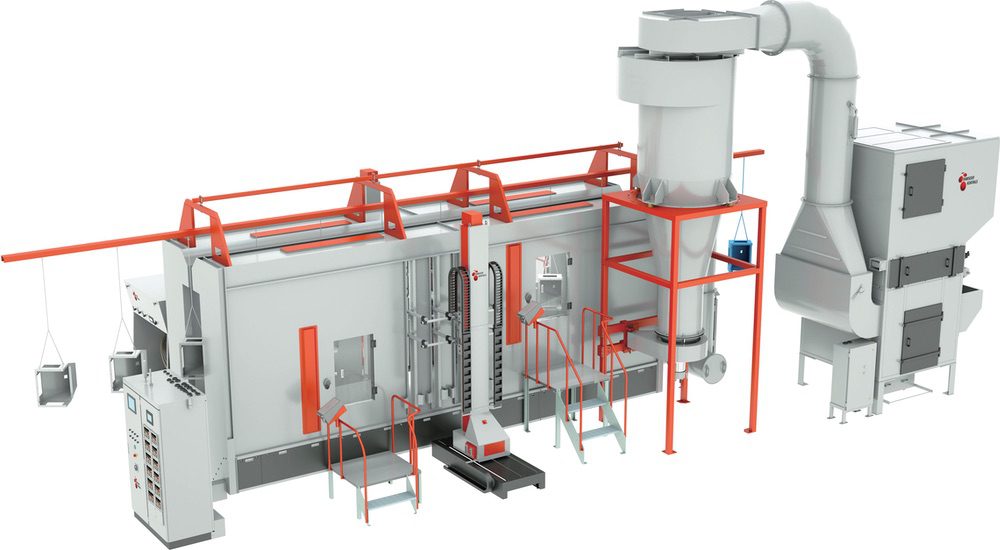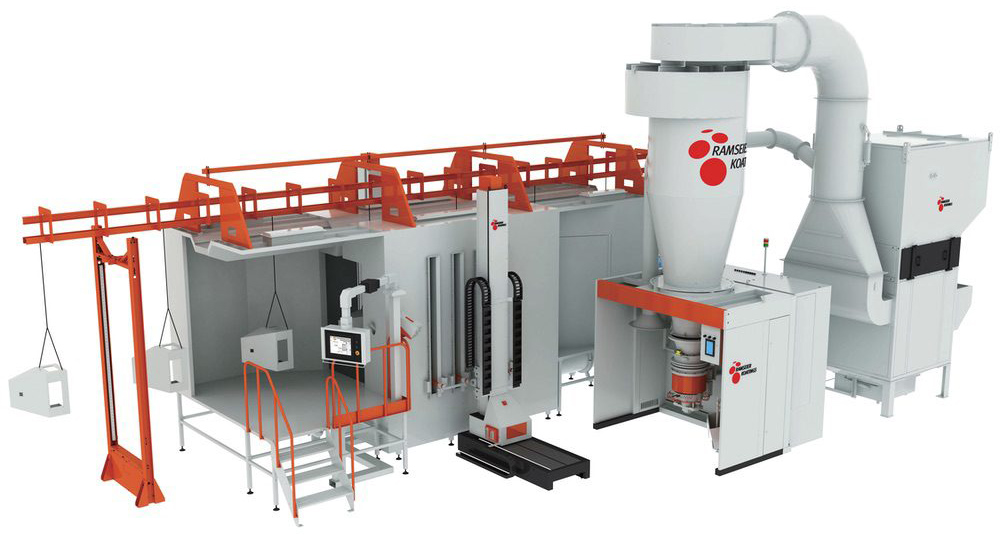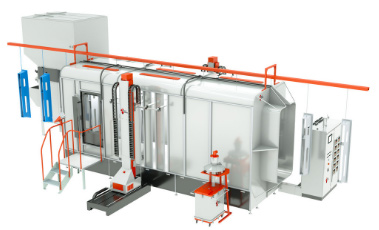
+852 2363 2511
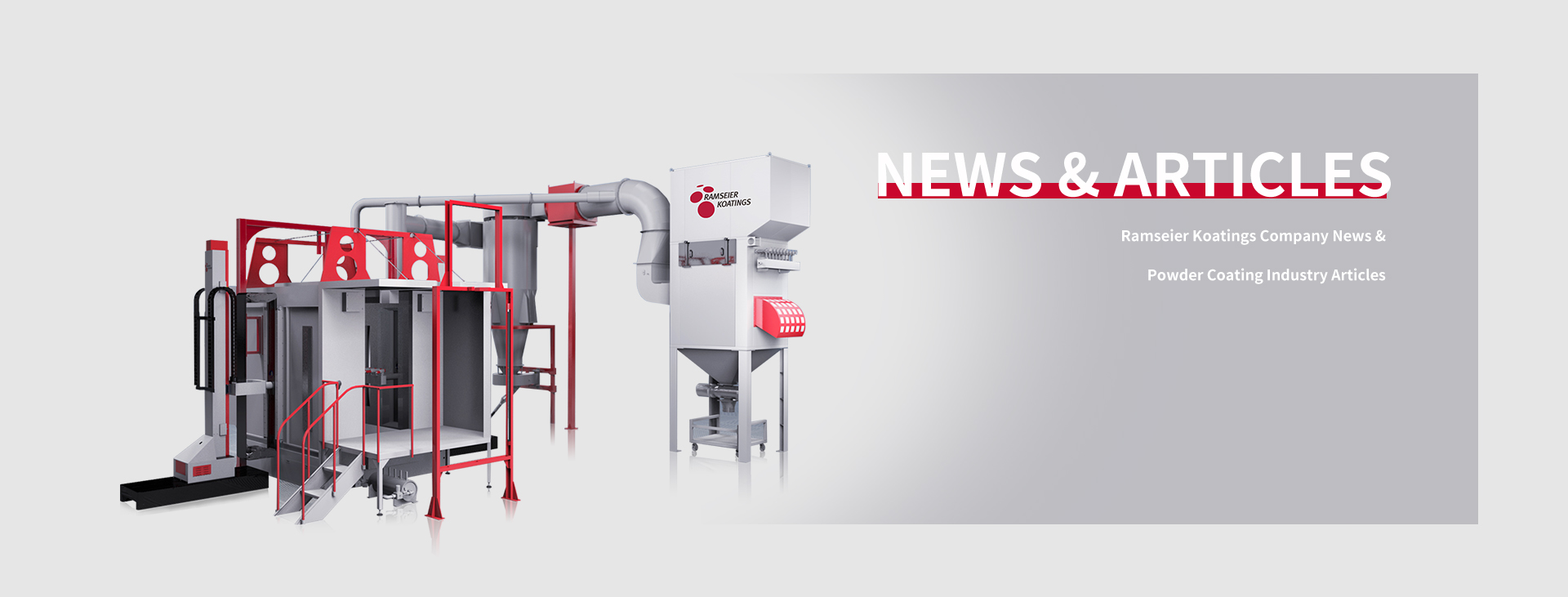







Slashing the emission of volatile organic compounds (VOCs) from surface finishing technologies has become a matter of paramount importance ever since the realization that human activities, even the smallest ones, like painting, are positively savage towards the environment.
And though revolutions in surface finishing technology are always coming, powder coating remains one of the best ways to set up a wooden, metallic, or plastic surface with a protective and visually striking surface in an efficient and eco-friendly manner. If you would like to undertake a powder coating project, whether DIY or commercial, consider Ramseier Koatings equipment.
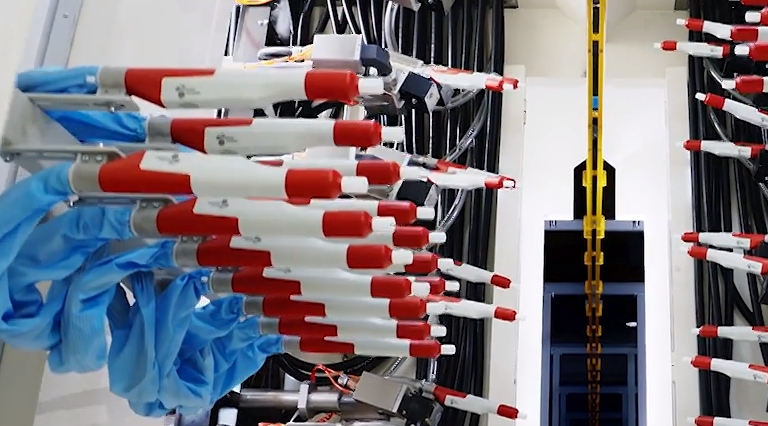
Powder coating is a surface finishing technique that involves spraying surfaces of objects with negatively charged epoxy/polyester powder and baking in a high-temperature oven to melt and fuse the powder particles into a uniform protective and decorative layer.
It’s a dry coating procedure, meaning there’s no use of solvents and release of VOCs. It’s typically done in a powder coating booth, starting with pretreatment of the surface to eliminate oils and other residues, followed by drying and application of the powder using a spray gun.
Curing involves heating to high temperatures to fuse the powder particles into a uniform, harder and smooth, corrosion-resistant, scratch-proof, and decorative layer.
Corrosion is the deterioration of certain metals and non-metals due to chemical or electrochemical reactions with their environment. It can occur in various environments and is exacerbated by factors such as stress, temperature, and the presence of certain chemicals.
Rusting is a form of corrosion. It reduces the stability and aesthetics of metals such as iron. Powder coating covers surfaces with protective layers, preventing corrosion and other types of deterioration. Benefits of powder coating include:
Being a dry finishing technique, Powder coating doesn’t rely on excessive temperatures to cure. Depending on the type of powder, you only need temperatures between 200F and 400F. Plus, any overspray can be gathered for reuse.
Powder coating is a dry finishing technique often done in a booth, and any spilled powder can simply be collected for reuse.
Powder coating doesn't use solvents, meaning it doesn't emit VOCs. These are volatile organic compounds resulting from evaporating liquid paints. They smog the atmosphere, resulting in air pollution and other environmental issues.
Powder coating doesn't take long. It's a three-step process involving pretreatment, spraying, and curing, resulting in shorter project turnarounds.
Powder coating doesn't suffer from dripping. It forms a thicker and durable film that doesn't fade or chalk easily.
Curing results in a uniform, smooth, and non-porous film, preventing staining or dirt absorption.
Powder coating saves money by allowing a resume of overspray. It also creates superior coating, reducing the need for frequent re-touch to fix fast degrading coating.
Unlike other surface treatment techniques, powder coating offers a smorgasbord of finishes to achieve the function and aesthetic appeal you want. Indeed, some of the popular finishes include:
● Gloss. Characterized by a polished, elegant appearance, glossy surfaces reflect light more, resulting in a vibrant look. They are commonly used for automotive parts and other outdoor machinery.
● Semi-gloss. Semi-gloss works just like a gloss but in a low-key kind of way, making it suitable in situations where a high shine is disapproved but durability is needed.
● Matte. When you hear matte, just remember it's a non-reflective and low-maintenance finish with a low-level sheen. It's commonly used on indoor surfaces.
● Textured. Textured has slight roughness, resulting in a visually appealing look. It's commonly used on outdoor structures and heavy-duty machinery and to obfuscate imperfections.
As mentioned, powder coating is a three-step process starting with pretreatment, spraying, and curing. If you consider the final cooling as an extra step, then you have a four-step process.
Anyway, the procedure starts with pre-treatment. This is where the surface is blasted, wiped, or washed to remove oils, rust, dirt, old finish, and other residues that might otherwise interfere with the fusion of powder particles.
Depending on the level of pre-treatment required, you may need to set up specialized equipment such as air compressors, sandblasters, and hosing equipment.
You'll also need to dry the surface after pre-treatment. This can be done in an oven or in the open air.
Next, the object is grounded and sprayed with electrostatically charged powder. This allows the negatively charged particle to cling to the object's surface. You can use epoxy, polyester, acrylic, or nylon powder.
Pick one that produces the performance characteristics and finish you want. Also, ensure it's compatible with the substrate you are treating. In case of too much spray, use an air gun to selectively remove excess powder.
The third step involves curing in a high-temperature oven. Depending on the powder, you may need equipment capable of 300-850 F. For example, polyester cures at 350 degrees Fahrenheit, nylon at 325 Fahrenheit, and epoxy at 400 Fahrenheit.
Curing aids in the melting of the powder particles into a non-porous, uniform, continuous, and durable film. Once you are done with curing, remove the object from the oven and allow it to cool.
So, you are considering taking on a powder coating project? You will need some special tools for the project. Here's a breakdown:
As mentioned, you may need to set up a pre-treatment booth comprising an air compressor, sandblaster, and wash station to clean the surface of the object you want to coat.
Once you are done with the blasting, washing, and wiping, you will need to preheat the object to make the surface dry and ready for the powder spray. You can do it in a dry-off oven.
If you plan to run a powder coating business, consider investing in state-of-the-art pre-treatment equipment. On the other hand, if you plan to do powder coating simply as a hobby, use a hose pipe and dry the object in the open-air sun.
Powder coating is typically done in a closed-off area to contain the particle spray. Booths keep the operation clean, preventing electrostatic contamination of the powder by dust and dirt in the air, which would otherwise interfere with the fusion. It also keeps out wind and helps maintain the correct temperature and humidity for the operation.
There are many different types of booths for you. It all depends on the complexity of your project, available space, the size of objects you hope to work with, and the available budget.
● Portable booths. Choose these smaller, lightweight booths if you want something easy to transport. They are typically more affordable than permanent booths.
● Permanent booths. If you don't plan on changing your powder coating location, choose a permanent booth. These are typically larger and more sophisticated but will cost you more bucks.
● DIY booths. These are alternatives to ready-made booths for folks doing powder coating once in a while only. You can set up one using plastic sheeting tents, cardboard boxes, etc.
● Open-air spraying. Try open-air spraying, provided you have a well-ventilated space with structures to prevent wind action.
Powder coating uses spray guns to electrostatically charge epoxy, nylon, polyester, or acrylic particles and spray them on the surface of a grounded object. We have many different types of spray guns and systems ranging from this LG-S600 handheld bad boy to the KMB Fast Color Change box and this Patented Automatic Powder Coating System. If you want help selecting a gun or system, consider the following factors:
This is the speed with which the units charge spray powder. It's measured in kilovolts. Some units come with pre-set application rates, while others allow the freedom for customization to suit the part being coated. Higher Kvs produce strongly charged particles.
You can even stand far away from the object and still transfer powder efficiently. However, they also tend to cause dimples (back-ionization) on the surface.
Coating powders like polyester require higher Kvs to transfer efficiently, while polyurethane powders and metallics work just fine with low-voltage guns.
If you are coating a larger surface you’ll need a gun capable of outputting larger volumes of powder per time.
If you want to create a coat with special effects and colors, choose a gun with a more precise and variable spray pattern. The same applies in the case of objects with complex-shaped surfaces.
Choose a gun that's easy to handle; otherwise, you will experience fatigue issues, and bang goes any fond hopes of a smooth, uniformly coated surface.
If you want a high application speed, consider automatic systems or guns with wider spray patterns. Automated systems can coat in a faster and more efficient manner.
Ensure you have enough space to install the powder coating system without interfering with the local safety codes. Budget
In case you’re doing it as a hobby to powder coat or are new to the craft, start with an inexpensive gun to gauge its performance and whether you like the technique. Once you resolve to do it often and for commercial reasons, invest in state-of-the-art units or automatic fast color change and powder management systems.
Powder curing is typically done in ovens capable of 300-850 F heating, depending on the type of powder. You can use specialized curing ovens for commercial coating applications or just to achieve professional-looking surfaces. These can be gas-powered or electric.
Consider whether you prefer a batch or conveyor system. Conveyor systems are built to ensure fast project turnaround. They can be infrared (superfast direct heating) or convection (slower but easy to control the direction of heating, especially when dealing with objects with complex shapes).
Infrared and convection ovens can be further classified into Class A, which has safety features for folks working with combustibles and solvents with VOCs, and Class B, which is fine for dry-finishing techniques like powder coating.
The size of the oven, temperature range, and performance matters, too. Look for ovens with better temperature uniformity for even curing and insulation, thick walls, and small openings (if any) to reduce heat loss.
Alternatively, if you only plan to do occasional powder coating, simply jury-rig your propane grill into a 'pregnant oven' for the curing project. Just make sure it's capable of producing temperatures required by the powder to melt and fuse properly. Also, it must be large enough for the object.
Powder coating is a versatile finishing technique with a smorgasbord of uses across many different industries, including:
● Automotive. Powder-coating finishings like glossy and semi-gloss are used on the surfaces of vehicle parts, boat parts, outdoor furniture, rails, and more to create a shiny, lustrous look.
● Architectural. Powder coating finishing like matte and texture can be used on wooden, aluminum, steel, and plastic surfaces in a building to create a protective and decorative surface. Another popular powder coating finishing for architectural projects is anti-graffiti, designed to resist markings, pants, and sprays from local 'Banksys.'
● Consumer appliances. Powder coating finish, especially anti-microbial, is used on medical devices, food processing equipment, and restrooms. On the other hand, ovens, grills, and other heating utensils typically spot heat-resistant powder-coated finish.
Yes, you can apply paint to a powder-coated surface, but not the other way around. Start by priming the surface of the object, then apply the powder, and paint, and cure in an oven.
Although powder coating creates a durable and fade-resistant film, it degrades over time due to scratches, chemicals, and other factors. Applying paint over powder coating can help protect this inner layer and also improve its appearance.
Alright, there you, powder coating enthusiast; with the above guide, we are sure you are ready to start your surface treatment project. Head over to our products page for a look at our advanced powder coating units and systems, alright.
We have equipment ranging from manual guns to patented fast color change systems and automatic powder management systems. If you need help selecting equipment for your project, we are here to help.
